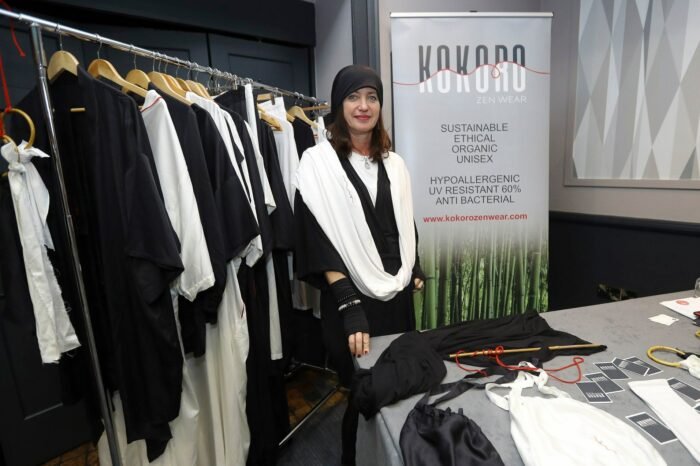Want to make the impossible possible? Read this…

In his new book Make Brilliant Work, artist, lecturer and creativity expert Rod Judkins, shows how to unleash your creative juices even when you are not inspired
What do you do when you’ve tried everything you can think of to solve a problem, but it still seems impossible to fix? If a task seems unsolvable, it’s because your thinking is wrong. Chances are, you’re using conventional approaches to an unconventional problem. Think alternatively, and solutions appear.
Some people make possible a task others have dismissed as impossible. The challenges of a demanding task bring out your qualities more than something that’s easily attainable. You just have to be more ingenious – focus on the options, not on the limitations.
Architects believed a small plot of land in Brazil was impossible to build on. The plot consisted of two small areas split between an old factory chimney and a nineteenth century factory with an underground stream flowing through the middle – an architect’s nightmare. They tried to tackle it in the way they had always done, but stuck on the many problems, they froze. It seemed impossible because they were trying to put a conventional building onan unconventional location.
Architect Lina Bo Bardi found a way to build a sports and culture centre on it by stacking the swimming pools and basketball courts on top of each other on one area, and layering the changing rooms in a tower on the other and connecting them with flying bridges. She transformed an impossible plot into an exciting mix of architectural imagination and social utopianism, which became the SESC Pompéia.
Given a standard site, she’d probably have produced a conventional building, and I wouldn’t be writing about her. Positive beliefs are powerful. Do what is possible. Build tall towers where you can build tall towers. Connect them however possible. Other designers focused on what wasn’t possible, but Lina Bo Bardi concentrated on what was.
Put aside all the prejudices, noise and fears in your head and see a situation with fresh eyes: you will see things for what they are when everyone else is looking through the fog of their training, prejudices and assumptions.
Conventional thinking can be a trap when faced with an unusual problem, and our perception of a situation can be a source of weakness rather than a source of strength. Put aside all the prejudices, noise and fears in your head and see a situation with fresh eyes: you will see things for what they are when everyone else is looking through the fog of their training, prejudices and assumptions.
Alec Issigonis was nicknamed ‘the Greek god’ by his contemporaries because he performed miracles. In the late 1950s, governments severely rationed fuel because of the Suez Crisis and Issigonis’s company gave him an impossible task: to make a car significantly smaller but hugely increase the space for passengers. He responded by tearing the conventions of car design apart: he put the engine sideways. It increased the area inside, but made the car shorter and perfect for city life.
The result, the Mini, is the highest-selling British car in history and is still in production today. It’s the most influential car of all time because turning the engine sideways forced other groundbreaking innovations: a sump gearbox, 10-inch wheels,and the most innovative of all, a front-wheel drive. Issigonis ignored the people who told him it was impossible to produce magic. Instead of letting the problem cloud his thinking, he considered the unthinkable.
Early one morning, two of my third-year students went for a job interview at one of the world’s top advertising agencies. They were a team, copywriter and art director, and presented their portfolio. Their work was brilliant, and the interviewers were astonished and excited by their ads.
But at the end of the interview, they were told, ‘Your work is brilliant,and we’d like to hire you, but you’re too young and you don’t have enough experience, so come back in three or four years when you’re older.’ They returned to college at lunchtime,crushed. Their work was mature, but they weren’t deemed old enough. It seemed like an insurmountable problem, but we dyed their hair grey, dressed them in old-fashioned clothes,painted lines on their faces, and sent them straight back to the agency in the afternoon. They asked to see their interviewers and declared, ‘We’re old enough now.’ They were hired on the spot.
Two final thoughts here:
1. Search for possibilities in a seemingly impossible task, and alternative thinking will uncover
opportunities you overlooked. A mother had complications giving birth. The obstetricians
used forceps and accidentally severed a nerve in the baby’s face, causing paralysis in his
tongue, chin and half of his lip. He grew up with a permanently snarling expression and
slurred speech. But he wanted to be an actor. He overcame the obstacle by writing a film
script with a part for himself as a boxer. Rocky made Sylvester Stallone one of the most
iconic actors of his generation. Search for what is possible and build on those foundations;
craft your idea around what is doable.
2. Don’t listen to the doubters and the negativity of others. Most worthwhile endeavours seem
impossible at some point – until you harness your imagination’s power to overcome them.
Born a slave, Frederick Douglass was separated from his parents and lived a life of suffering
and violence. The proslavery elite argued slaves did not have the intellectual ability to live as
independent American citizens, so Douglass made himself into a living counterexample. He
taught himself to read and became the anti-slavery movement’s leader due to his persuasive
oratory and incisive writing. His task seemed impossible to others but, he realized, set out to
prove the doubters wrong, and you’ll find you’re doing the impossible.
Make Brilliant Work, from Picasso to Steve Jobs, how to unlock your creativity and succeed, by Rod Judkins, is published by Pan Macmillan






